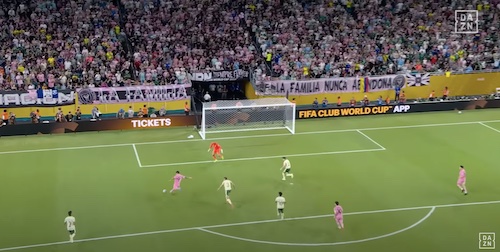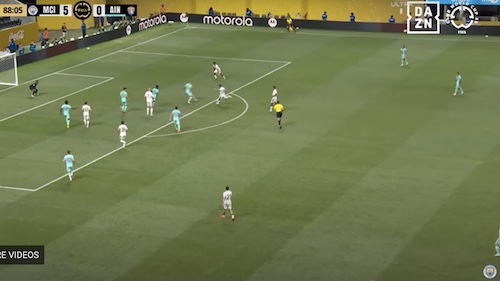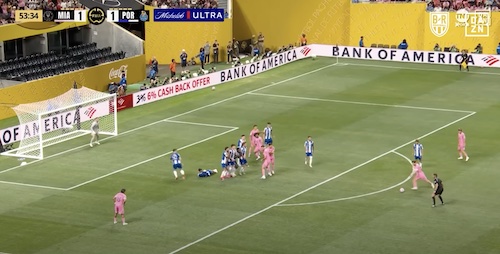By Jeff Kassouf
Women’s soccer fans finally have something tangible to refer to their new league as. Women’s Professional Soccer (WPS), a league slated to begin in the spring of 2009, unveiled that name along with their logo on Thursday at the NSCAA Convention. Unlike almost every other sports league in the country, the colors of the league’s logo will not be red, white and blue.
Instead, the league will don the colors of red, gold, white, and a deeper navy blue in an attempt to be more international. More defining than that is the logo encompassed by these colors. In a move that not only honors the greatest women’s player of all time but also connects the new league with old tradition, WPS’ logo is dominated by a familiar silhouette. Unmistakable to any soccer fan, that player in the logo is Hall of Fame player Mia Hamm.
While some were rallying for the old WUSA name to be reinstated, the league made the right choice in creating something new. There are also other questions that arise from the league’s announcement. While nobody expects the WPS to attain the level of any of the major sporting leagues in America, all of them use the country’s colors, red, white and blue, as their league colors.
The only exception to this is Major League Soccer, which sports the colors of green, white, and blue, and the National Hockey League, which is defined by its orange, white, and black logo. However, MLS is also yet to attain the popularity that is enjoyed by the NFL, NBA, and the MLB, and hockey has struggled ever since the NHL players’ strike.
Even more questionable is the league’s initiative to forgo the words “league” or “association” as a part of their organization, something unprecedented in the major league sports scene. One would expect it to be the “WPSA”, or “WPSL,” but the league has decided to be innovative (not to mention the fact that, confusingly enough, the WPSL is already a women’s semi-pro league).
Tonya Antonucci and company may have decided to change things up a bit in these regards, but I commend their forward-thinking. They seem to be striking the perfect balance between old and new. Certain traditions such as the name of the Boston Breakers, what will most likely be the retention of the name of the Washington Freedom, and Mia Hamm’s silhouette still remain.
On the other hand, WPS has made it clear that this is not the WUSA, and for good reason. Women’s Professional Soccer will need to run a tighter ship if they expect to find success in a saturated American sports market. The layout of the league is already quite different from the WUSA.
Four of the seven announced markets are new from the Women’s United Soccer Association, with one market yet to be announced. Chicago, Los Angeles, St. Louis, and Dallas are new to the women’s market, and rightly so. Boston, Washington, DC, and New York/New Jersey were members of the WUSA.
Three of the four new markets will have MLS teams to build ideas and success off of, and St. Louis is in contention for an MLS expansion side. The eight and final charter member could return to an old market in San Diego, Atlanta, San Jose, or Cary, North Carolina. Or, it could end up in a new market, such as the soccer-rich hometown of Abby Wambach, Rochester, NY.
The Carolina Courage was one of the most successful teams in the WUSA on and off the field, and with a perfect stadium (WakeMed Soccer Park, formerly SAS Soccer Park, seats 7,500) already there, I don’t see how the market can be resisted. Regardless, the decision needs to be made soon.
Now that there is a league name, logo, and functioning website, the next step is getting the eighth market finalized, and getting each team named so that fans have something to follow in the coming months. Teams won’t have any players until late summer, but they should at least finalize their names, colors, logos, and the likes to give fans something to rally behind.
WPS will also have the help of Soccer United Marketing to promote their league and teams, providing a huge boost. While Major League Soccer claims not to have direct affiliation, it’s not a coincidence that most teams are in an MLS market, including many that have or will soon have soccer specific stadiums.
This will significantly cut costs for the WPS teams. Surely, MLS will want to see its female counterpart succeed. Hopefully Women’s Professional Soccer gets things right and is here to stay. The world’s number one country for women’s soccer needs to have a top level professional league, and WPS must prove to be that league.
Jeff Kassouf is a staff writer for The New Paltz Times and a freelance writer who covers soccer, and can be reached at: jeffkassouf@yahoo.com















